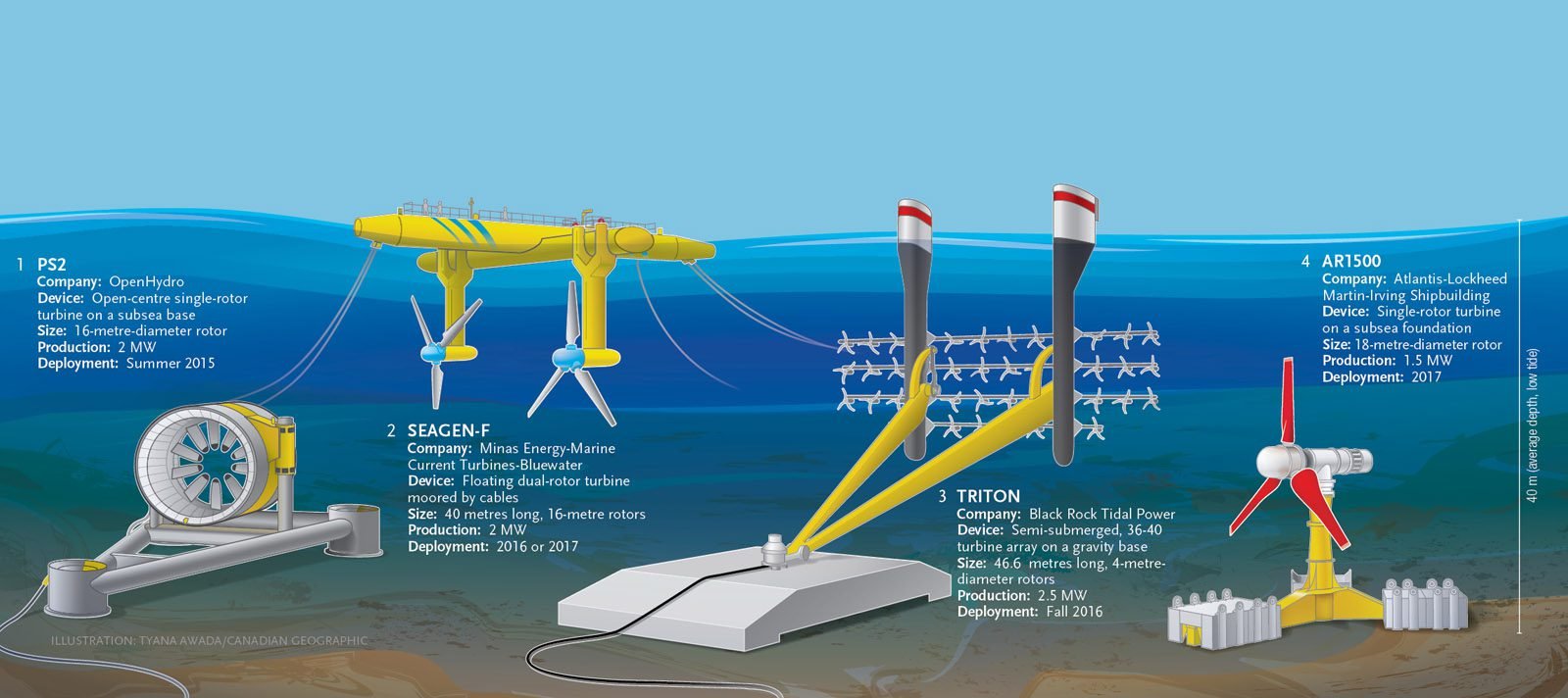This post’s subject is the operation of underwater turbines. Also are called free flow turbines and remind wind generators.
Ocean currents
Ocean currents are made by wind, Earth’s rotation and tidal movement. The latter are result of gravitational forces from Moon and Sun. The hot currents, in red on map, are originated from intertropical part of planet, are more superficial, faster and with a higher evaporation rate. The cold currents, in blue, are formed in polar regions. Are deeper for being colder, so have higher density. Speed and evaporation rate are lower.

The factors which determine an ocean current’s direction are: Coriolis effect, wind shift, diferences of temperature and air pressure, submarine relief and shape of continents and islands. Currents have a great influence in climate and marine life.
How turbines work?
Water flux moves turbine’s blades, because they have airfoil shape. Turbine is coupled to a gear set which increases output’s rotational speed to move a generator. A flexible coupler links the turbine to gearbox.

The generator is linked with submarine cables, transmitting electric energy to a substation in the surface. This hydro power plant can be installed in seas, rivers or channel. Can be sustained by a structure in sea’s surface or by a floater.

Some structure projects don’t use foundations and turbines are kept by weight’s structure.

This is the formula to calculate power P of a wind turbine in watts, but let’s apply to underwater turbines because they work in similar way.
P=\frac{1}{2}\rho A_{r}v^3C_{p}\eta
- \rho is fluid density in kg/m^3.
- A_{r} is the area of blade’s motion, values \pi r^{2}, being that r is circle radius.
- v is fluid speed in m/s.
- C_{p} is the power aerodynamic coefficient.
- \eta is the efficiency of generator and gearbox.
Sea water density is more than 800 times higher than air density. Therefore, an underwater turbine can have smaller blades and spin with lower speed to produce as energy as a wind turbine with bigger blades and which needs a higher wind speed. In table below, air density on the left and water density on the right.

Advantages and disadvantages
In addition to be a renewable energy source, the advantages of underwater turbines in relation to other sources are:
- Blade`s size and flux speed can be lower for reasons explained above.
- Ocean currents are predictable.
- Turbine`s low speed don`t offer risk to fishes.
The disadvantages are:
- This technology is still too expensive.
- Can only be installed in specific spots.
- Maintenance needed due to sea water corrosion.
Other models of underwater turbines
The 3 blades model isn’t the only one that exists. Some turbines have many blades.

PS2 of OpenHydro on the left in figure below, does not have a central axis, blades are connected to a rotor in ring shape. Triton power plant has 36 to 40 small underwater turbines.





Hi, from South Africa, we have offshore a constant current of around 4-5 knots, around 5klm out and at a depth of 25m, what would be the largest turbine or turbines to run a small city and approx. cost.
the country has been given the green light to look into this, fabrication could be done here were very capable of that but lack the knowledge.
regards
Robin
027 832271717
Interesting.